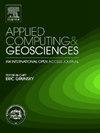环礁卫星图像的语义分割框架:使用UNet变体和分割体育馆的深入探索
IF 3.2
Q2 COMPUTER SCIENCE, INTERDISCIPLINARY APPLICATIONS
引用次数: 0
摘要
针对环礁形态计量学的研究,提出了一种卫星图像语义分割框架。深度神经网络在自动分割方面的最新进展在各种卫星和航空图像应用中都很有价值,例如土地覆盖分类、矿物表征和灾害影响评估。然而,为地球科学研究确定合适的分割方法仍然具有挑战性,通常依赖于反复试验来进行数据准备、模型选择和验证。在先前为航空图像分割创建可重复研究管道的努力的基础上,我们提出了一个系统的框架,用于使用segmentation Gym开发自定义分割模型,这是一个专为高效模型实验而设计的软件工具。此外,我们评估了最先进的U-Net模型变体,以确定最准确和精确的模型,用于特定的分割任务。以288张环礁陆地卫星图像数据集为例,详细分析了各种标注技术、图像类型和训练方法,为从业者设计和探索分割模型提供了结构化框架。此外,我们解决了数据集不平衡,这是地理数据中的一个常见挑战,并讨论了减轻其对分割结果影响的策略。基于我们的发现,我们提供了将该框架应用于其他地球科学研究领域以解决类似挑战的建议。本文章由计算机程序翻译,如有差异,请以英文原文为准。
Semantic segmentation framework for atoll satellite imagery: An in-depth exploration using UNet variants and Segmentation Gym
This paper presents a framework for semantic segmentation of satellite imagery aimed at studying atoll morphometrics. Recent advances in deep neural networks for automated segmentation have been valuable across a variety of satellite and aerial imagery applications, such as land cover classification, mineral characterization, and disaster impact assessment. However, identifying an appropriate segmentation approach for geoscience research remains challenging, often relying on trial-and-error experimentation for data preparation, model selection, and validation. Building on prior efforts to create reproducible research pipelines for aerial image segmentation, we propose a systematic framework for custom segmentation model development using Segmentation Gym, a software tool designed for efficient model experimentation. Additionally, we evaluate state-of-the-art U-Net model variants to identify the most accurate and precise model for specific segmentation tasks. Using a dataset of 288 Landsat images of atolls as a case study, we conduct a detailed analysis of various annotation techniques, image types, and training methods, offering a structured framework for practitioners to design and explore segmentation models. Furthermore, we address dataset imbalance, a common challenge in geographical data, and discuss strategies to mitigate its impact on segmentation outcomes. Based on our findings, we provide recommendations for applying this framework to other geoscience research areas to address similar challenges.
求助全文
通过发布文献求助,成功后即可免费获取论文全文。
去求助
来源期刊

Applied Computing and Geosciences
Computer Science-General Computer Science
CiteScore
5.50
自引率
0.00%
发文量
23
审稿时长
5 weeks
 求助内容:
求助内容: 应助结果提醒方式:
应助结果提醒方式:


